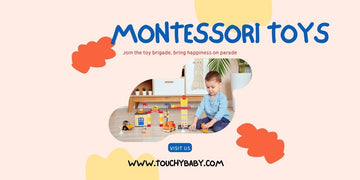
Childhood is a time of discovery, growth, and learning. However, for some children, it can also be a period marked by anxious thoughts and overwhelming worries. As parents, the well-being of our children is paramount, and understanding how to effectively manage and support them through periods of anxiety is essential.
In this comprehensive guide, we delve into the strategies that parents can employ to help their children navigate the challenges of anxiety.
From recognizing the signs of anxiety to fostering open communication and teaching valuable coping skills, parents play a pivotal role in guiding their children toward emotional resilience and well-being.
5 Strategies for Parents to Manage Child Anxiety
Recognizing the Signs of Child Anxiety:
As a parent, being attuned to your child's emotional well-being is crucial. Anxiety is a natural part of life, but when it becomes overwhelming and interferes with daily activities, it's important to recognize the signs and provide the necessary support. Here's how to identify potential indicators of child anxiety:
- Physical Symptoms:
Look out for physical cues such as restlessness, muscle tension, headaches, stomachaches, and fatigue. These can manifest due to the body's response to anxiety-inducing situations.
- Excessive Worrying:
Persistent worry that goes beyond normal concerns is a red flag. If your child is constantly anxious about a variety of situations and struggles to control their thoughts, it could indicate anxiety.
- Avoidance Behavior:
If your child consistently avoids certain situations, places, or activities due to fear or apprehension, it might be an indication of anxiety. This avoidance is an attempt to cope with overwhelming feelings.
- Irritability and Mood Changes:
Notice changes in your child's behavior, including mood swings, irritability, or sudden outbursts of anger. Anxiety can manifest as heightened emotional responses.
- Sleep Disturbances:
Anxiety can disrupt sleep patterns. Look for signs like difficulty falling asleep, frequent nightmares, or restless sleep that leaves your child feeling tired during the day.
Open Communication and Emotional Validation:
Creating an environment of open communication is a cornerstone of supporting a child dealing with anxiety. By fostering a safe space where they feel comfortable expressing their feelings, parents can provide the emotional validation and understanding that children need during anxious moments.
Here's how to establish open communication and offer emotional validation:
- Active Listening:
When your child opens up about their worries, be an attentive listener. Give them your full attention, maintain eye contact, and show genuine interest in what they're saying.
- Avoid Judgement:
Ensure that your child feels safe sharing their thoughts by refraining from passing judgment or criticizing their feelings. Every emotion they experience is valid.
- Ask Open-Ended Questions:
Encourage conversation by asking open-ended questions that go beyond simple "yes" or "no" answers. This gives your child the opportunity to express their thoughts more fully.
- Reflective Responses:
Respond with empathy and understanding. Repeat back what your child has shared to show that you've heard and understood them.
- Normalize Feelings:
Let your child know that feeling anxious is a common experience and that many people, including adults, go through similar emotions. Normalize their feelings so they don't feel isolated.
Teaching Coping Skills to Children:
Equipping children with effective coping skills empowers them to manage and navigate anxiety-inducing situations more confidently. As parents, you play a vital role in teaching these skills, which can serve as invaluable tools for a lifetime.
Here's how to guide your child in developing coping strategies:
- Breathing Techniques:
Teach your child deep breathing exercises. Inhaling deeply and exhaling slowly can help reduce feelings of panic and promote relaxation.
- Mindfulness Practices:
Introduce mindfulness techniques that encourage your child to stay present in the moment. Mindful breathing and grounding exercises can help them manage racing thoughts.
- Positive Self-Talk:
Encourage your child to challenge negative thoughts by replacing them with positive affirmations. Help them identify their strengths and focus on their abilities.
- Visualization:
Guide your child through visualizing a calm and safe place when they feel anxious. This technique can help shift their focus away from their worries.
- Problem-Solving Skills:
Teach your child how to break down problems into smaller, manageable steps. This approach can make daunting situations feel more achievable.
Gradual Exposure and Desensitization:
Helping your child overcome anxiety involves facing their fears in a structured and supportive manner. Gradual exposure and desensitization are effective techniques that gradually expose your child to anxiety triggers, allowing them to build resilience and reduce fear over time.
Here's how to approach gradual exposure and desensitization:
- Understand the Concept:
Explain to your child that facing fears little by little can help them become less scary over time. Use relatable examples to help them grasp the concept.
- Create a Hierarchy:
Work with your child to create a list of anxiety-provoking situations, starting from the least anxiety-inducing to the most. This hierarchy serves as a roadmap for exposure.
- Take Small Steps:
Begin with the least anxiety-inducing situation on the list. Encourage your child to face it with your support. Gradually progress to more challenging situations as they become more comfortable.
- Offer Reassurance:
Provide reassurance and encouragement throughout the process. Let your child know that you're there to support them every step of the way.
- Stay in the Moment:
Encourage your child to stay in the anxiety-provoking situation long enough for their anxiety to decrease. This helps them learn that their anxiety will naturally subside.
Promoting Healthy Lifestyle Habits for Managing Child Anxiety:
A healthy lifestyle serves as a strong foundation for managing anxiety in children. Physical well-being and emotional balance are interconnected, and as parents, you can play a pivotal role in promoting habits that support your child's overall health and resilience.
Here's how to encourage healthy lifestyle habits to manage child anxiety:
- Prioritize Sleep:
Ensure your child gets sufficient sleep. A well-rested body and mind are better equipped to handle stress and anxiety.
- Balanced Nutrition:
Provide a balanced diet rich in whole foods, fruits, vegetables, lean proteins, and whole grains. Nutrient-rich foods support brain function and mood regulation.
- Regular Physical Activity:
Encourage your child to engage in regular physical activities they enjoy. Exercise releases endorphins, which are natural mood enhancers.
- Mindful Eating:
Teach your child to eat mindfully, focusing on the taste and texture of food. Avoid using food as a coping mechanism for anxiety.
- Hydration:
Ensure your child drinks enough water throughout the day. Dehydration can contribute to irritability and worsen anxiety symptoms.
Conclusion:
In the journey of supporting a child dealing with anxiety, parents hold the key to empowerment and resilience. By recognizing the signs of anxiety, fostering open communication, teaching coping skills, and promoting healthy lifestyle habits, you provide a robust foundation for your child's emotional well-being.
Remember that every child is unique, and there's no one-size-fits-all approach to managing anxiety. Tailor your strategies to suit your child's personality and needs. Be patient, offer unwavering support, and celebrate even the smallest victories along the way.
By equipping your child with effective tools to manage anxiety, you're not only helping them navigate challenges today but also imparting skills that will serve them throughout their lives.




